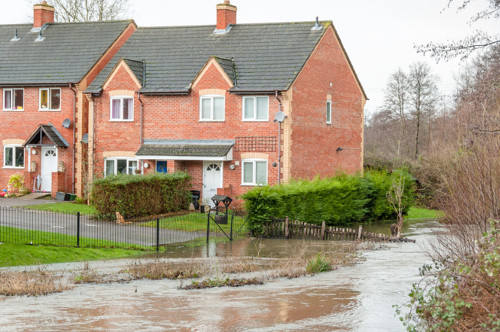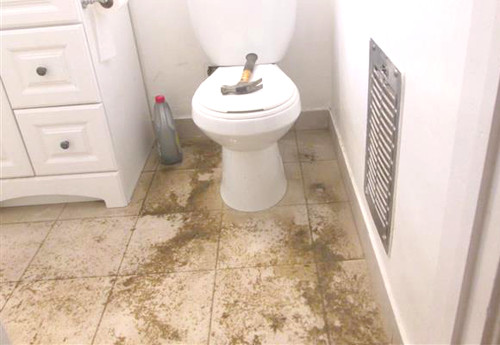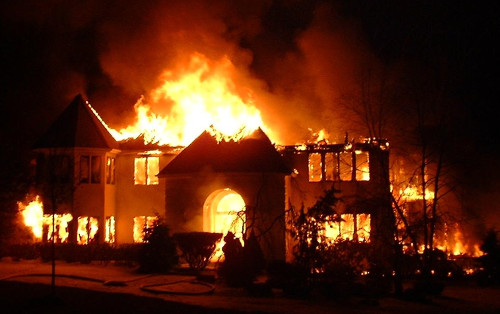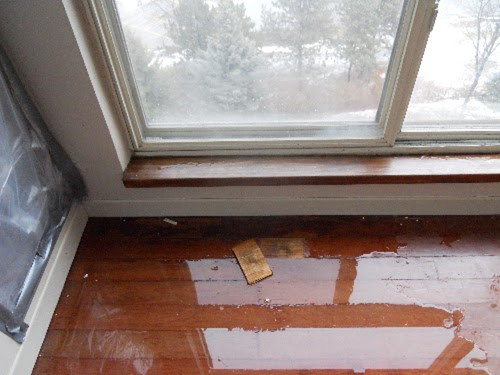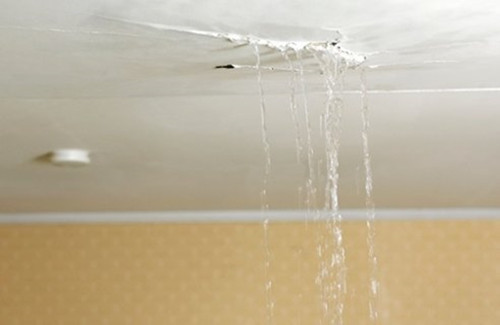Get a Home Insurance quote now. Start saving.
If you want to change your existing insurance or need a home insurance policy for your new home, it is better to be informed in advance about the most complicated insurance claims. That will allow you to ask your insurance company the right questions.
Going through a home insurance claim can be a pain. Multiple sides are involved which does not make the process easier (claims adjuster, restoration company, builder, etc.). You might not be able to live in your home for some time and that leads to high out-of-pocket expenses. At InsurEye, we know about these issues since consumers report claim processing times to us that can reach many months or even a year. Here you can read more home insurance reviews written by consumers.
We have identified five of the worst scenarios in home insurance that are potentially extremely expensive, stressful or both. Read on to learn what they are and how they affect you.
1. Overland flooding
Overland flooding, source: Canadian Underwriter
This one is a painful one as many homeowners in Alberta and Ontario experienced a few years ago. The reason is that overland flooding (flooding typically caused by external factors like melting snow and rain where water enters your home through walls, windows and doors) is generally not covered in Canada. Some insurers are currently reviewing their approach to insure this risk, but the challenge is that there is still only a limited amount of data about flooding in Canada and insurers do not like uncertainty.
2. Sewer backup
A sewer backup (also sometimes known as toilet overflowing) is a horror scenario for any homeowner. It can result in a flooded basement or rooms where the contents of your sewer get pushed into your house, completely destroying the interior. Even cleanup costs through a restoration company can add up to hundreds or thousand dollars. If you need to recover the full cost associated with this accident (e.g. damaged items, etc.) that can be a horror story too. Many people assume that they have this type of coverage but insurers often sell it as an additional add-on (also called a rider) to the insurance policy. Therefore, chances are you do not have it. Another dangerous item here is a deductible – some companies provide this coverage but it comes with a huge deductible. Imagine that you had a sewer back up where you need to pay a deductible of $10K or $20K before your home insurance kicks-in!
3. Total loss
This one is probably the most easy to understand. Should your house to be a total loss due to a fire, earthquake or something similar, you might need to move temporarily into other dwellings (e.g. rental, hotel) while your house is being rebuild; and that can take a lot of time. Also, agreeing with the insurer on all claim costs can be quite painful. Just think about all items (e.g. electronics, clothes, art) that were destroyed. Proving what you actually had and its value can be a long, unhappy process. A good tip is to go through your home every six month and photograph each room and all of the items in it. This will help you remember what items you’ve lost and allow you to have a fact-based discussion with your insurer.
4. Roof / windows / balcony door in condominium
This one might be not that expensive but it can be a complicated one to settle due to the fact that there are two insurance policies and insurance parties involved: the commercial condo policy and the personal condo insurance policy. Typically, commercial condo insurance would cover all shared areas (e.g. entrance, corridors, public rooms, swimming pool and building envelope) but personal condo insurance covers only the condo interior. Commercial condo insurance also covers exterior parts such as roof, glass etc. However for damages caused by, for example, a leaking roof, window or balcony door – insurance companies might start pushing responsibility to each other insurer. Home insurance brokers that InsurEye work with have shared several such stories with us.
5. Pipe burst in a wall in a condo
This one is similar to the previous claim type – commercial condo insurance and personal condo insurance providers might often have a tough time agreeing on who needs to pay for the consequences of a burst pipe in a condo wall. It is structural damage, it should be covered by the commercial condo insurance policy; but, if it has caused interior and content damage, such as damage to items in the condo, upgrades etc., it should be covered by your personal condo insurance. Our partnering insurance brokers reported many issues when resolving such cases.
[home_insurance_square_widget]It is not possible to fully prevent all unexpected surprises but knowing about them and being prepared to act is the first step. Review your home insurance policy and make sure that you understand what’s covered and what’s not (especially with a focus on sewer back up, overland flooding and contents insurance). If you want to be crystal clear what your policy covers, it is worth looking at our partner’s home insurance and condo insurance policies. These can be customized to your particular situation. Get your free quote and start saving today.

